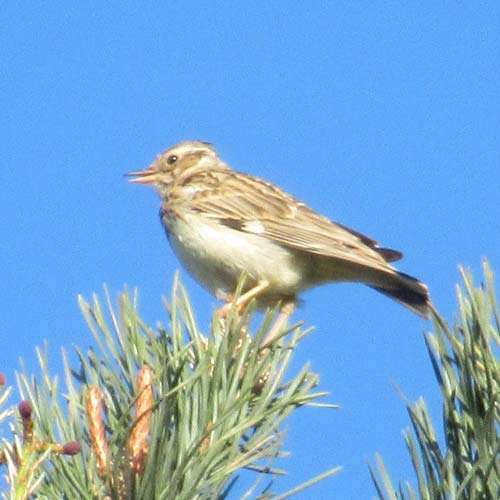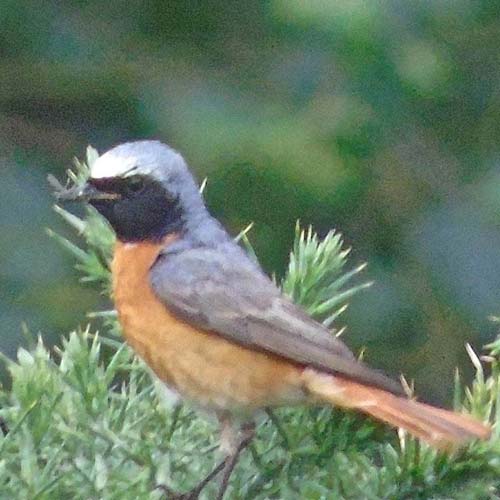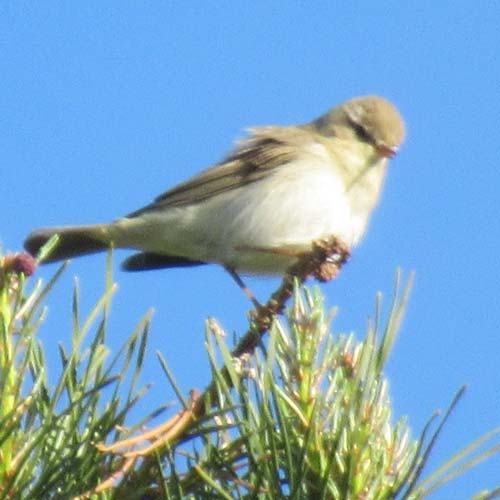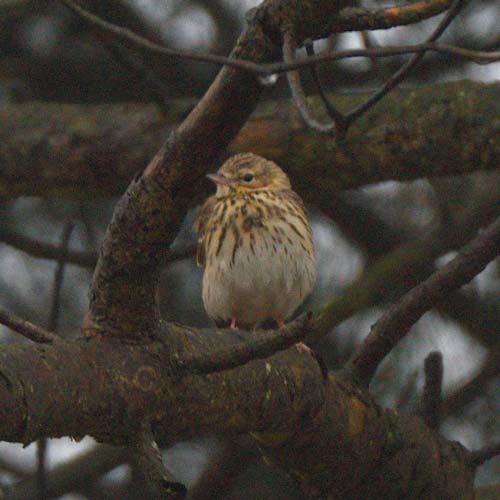FEBRUARY TO EARLY APRIL 2021 DURING 3RD LOCKDOWN
CLIVE POOLE, Voluntary Ranger 7th April 2021
February 2021 was cold as usual but the weather was not severe enough to kill off our population of resident DARTFORD WARBLERS. They could be heard calling while sheltering in thick gorse, where they hunted for spiders, their crucial winter diet. Occasionally a fleeting glimpse of a tiny dark -coloured long-tailed bird would confirm the presence of a “furze wren “, the old Sussex name for Dartford Warbler. They rely on heather for nesting and gorse for shelter and most of their food supply.
Our second avian relative UK rarity is the WOODLARK and our breeding population arrived back on the Forest in early February from their wintering grounds on the South coast or across the Channel (without needing to comply with lockdown restrictions). This season they have benefited locally from the gorse-management activities of the conservators who have removed some large blocks of very tall old straggly gorse, useless for wildlife. This has left areas of bare ground, gorse litter and scattered seeds. Just the job for WOODLARKS who are opportunistic colonisers after fire damage or major ground disturbance. They, paradoxically, both feed and breed on the ground on open heaths (not inwoods despite their name) searching the bare and battered ground for seeds and insects. They also favour feeding on short grass grazed by rabbits.




An early surprise was to find a male REDSTART on 30th March 2021. He had arrived about a week earlier than usual, making use of a couple of warm days with southerly winds to stage the final leg (across the Channel), of his long journey from his wintering grounds in Gambia or even further south in tropical Africa. He was singing from a mature Scots pine in a pine copse favoured annually by REDSTARTS for breeding on Ashdown. Being a hole-nesting species they look for cavitiesin Scots pines or birchesmade by Great Spotted Woodpeckers in a suitable one of which they will choose to raise their brood. Ashdown holds the majority of the Sussex population of this colourful summer visitor due to its habitat. The “start” portion of the name derives from the Old English “steort“ meaning tail; hence redtail, describing the prominent rusty tail which it constantly flicks .These birds have evidently been familiar to our ancestors for many centuries , though not to the average walker of the 21st Century.
Another early summer visitor this year was a WILLOW WARBLER, a male singing his beautifulsong, high notes risingand then descending, as he perched in willow scrubon the East Chase on 31st March. He had evidently also taken advantage of the “window” of warm weather with southerly winds to assist the final stage of his flight over the English Channel from tropical West Africa. Ashdown is a “hotspot” for breeding WILLOW WARBLERS in Sussex: they favour Ashdown’s altitude with its relatively cooler summer temperatures than the rest of Sussex.
This year a little later than the Redstarts has come a trickle of TREE PIPITS, also havingspent our winter in the warmer climes of tropical West Africa. This is in contrast to its closely related but much commoner relative the Meadow Pipit which summers and breeds most commonly in northern Britain and is mainly seen in winter on Ashdown heaths. You could say they swap residence on the Forest! An early male TREE PIPIT could be heard on 5th April from the top of a mature ScotsPine emitting his characteristic territorial song, warding off potential rivals on that hillside covered in purple moor grass and some heather and a few scattered pines. Another ground-nesting bird Ashdown holds the majority of Sussex’s breeding population of this declining visitor –because of its extensive suitable heathland.
Look for a bird singing from the very top of a tall tree which suddenly launches itself up into the air and continues to sing in a “parachuting” dive often back to the same perch. That maniac you saw was a TREE PIPIT!
As a break from searching hard for the “little brown jobs” you might like to watch the top of thickets of extensive thick gorse as you walk along the main paths through the heath. A noisy “ee-chuck” sounding like two small pebbles being knocked together coming from a bird of similar size to (and related to) a Robin flitting along the top of the gorse/furze will be a STONECHAT. The malesare dressed in smart breeding plumage now, with black faces, white collars and wing-patches and rusty -coloured breasts. Females are duller in plumage. They rely on the gorse for nest-sites and as perches. Watch them drop down to the path to collect a small insect and return to their perch.
Stonechats stay on the Forest for most of the year, only leaving temporarily in the harshest winter weather.
